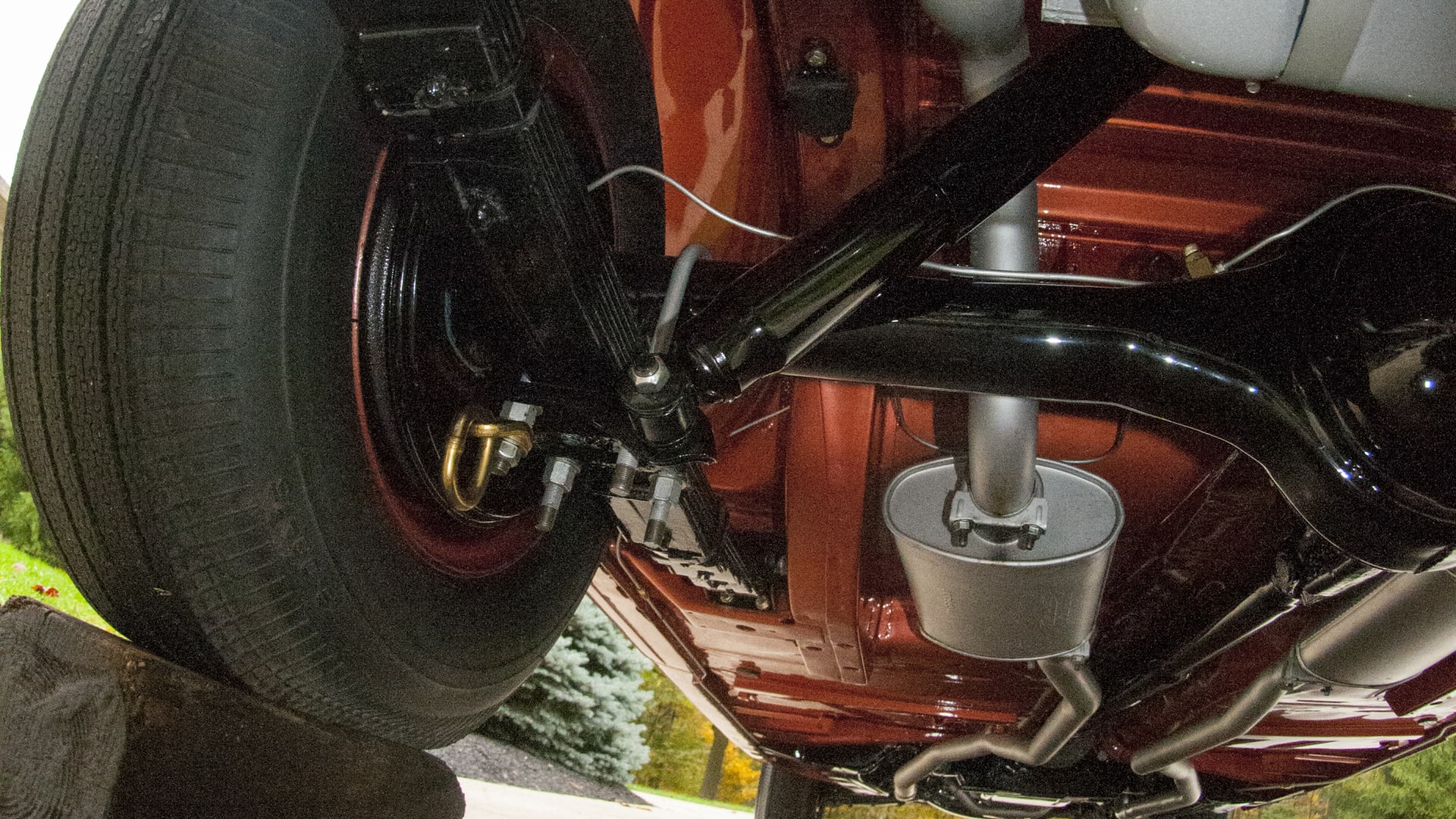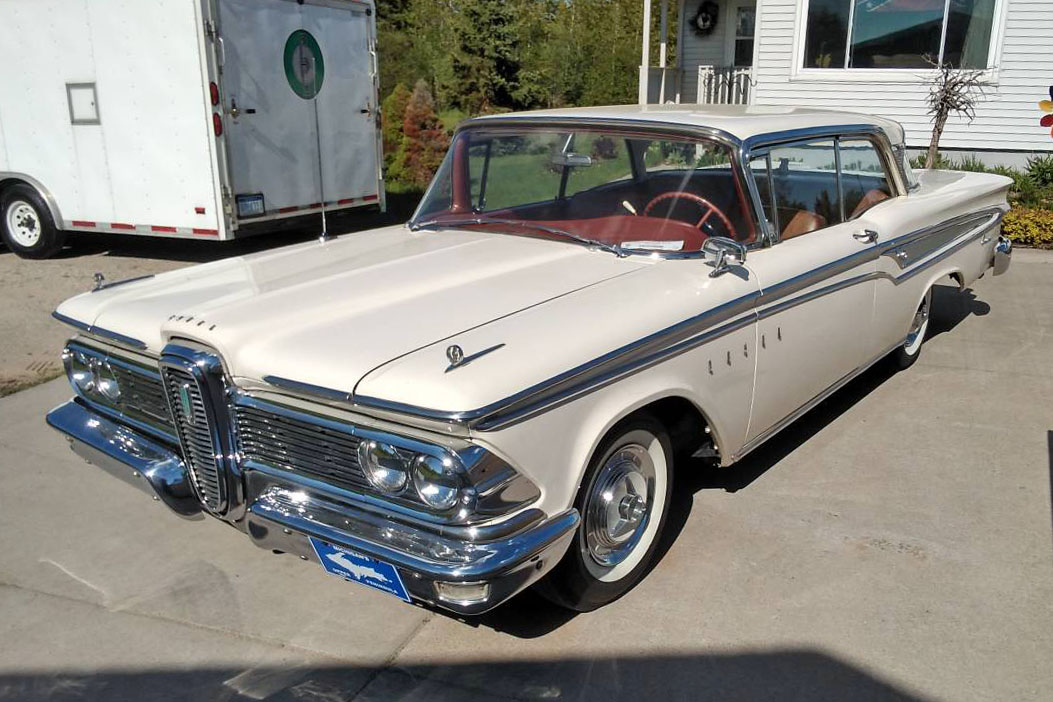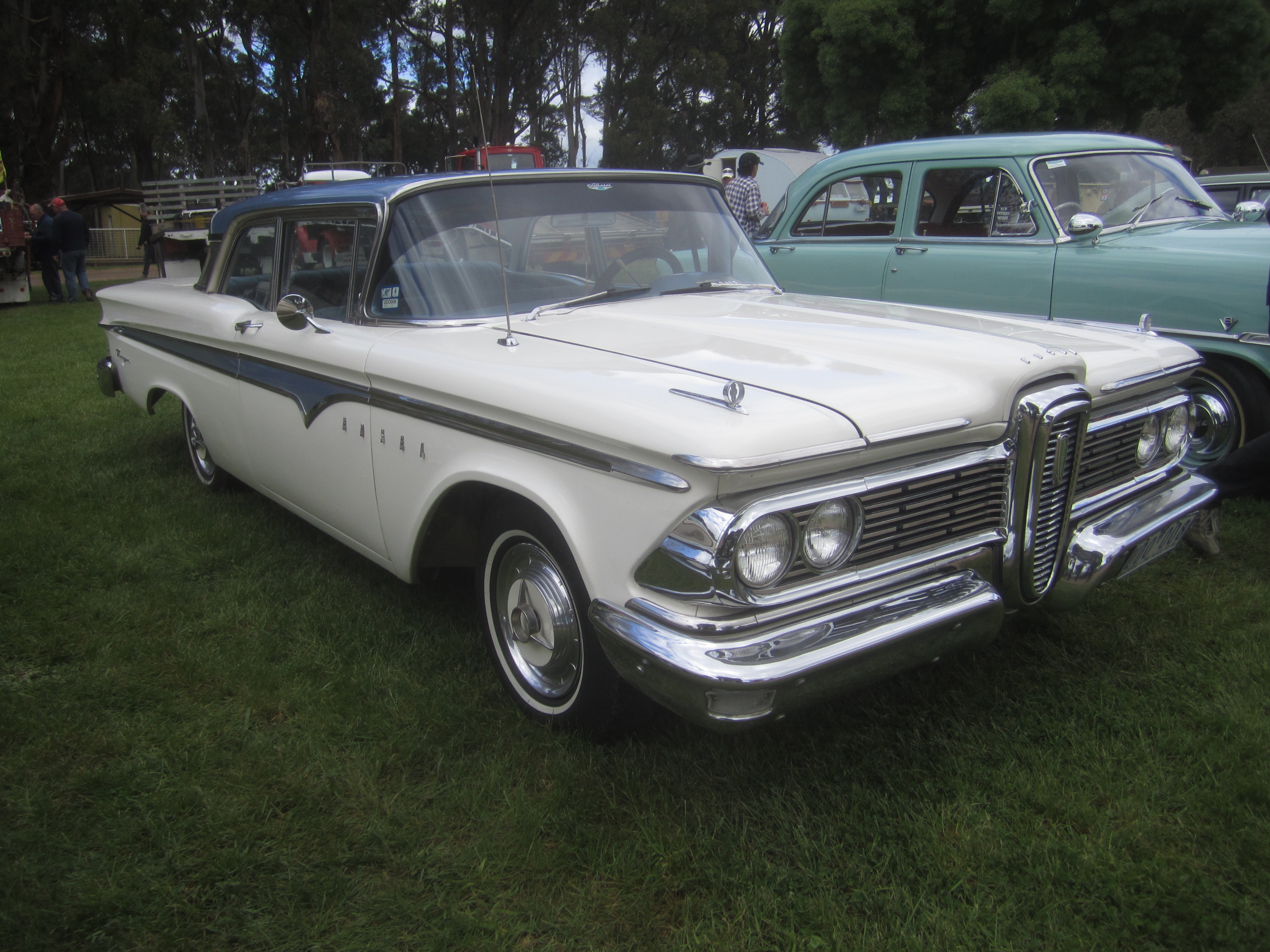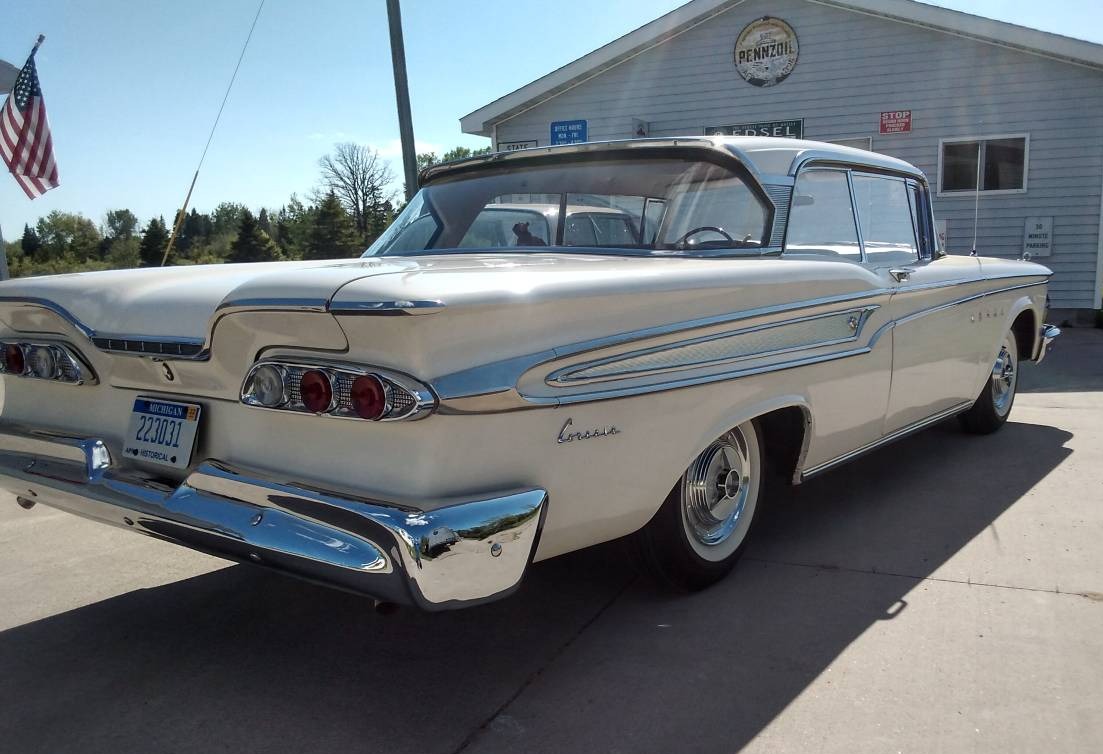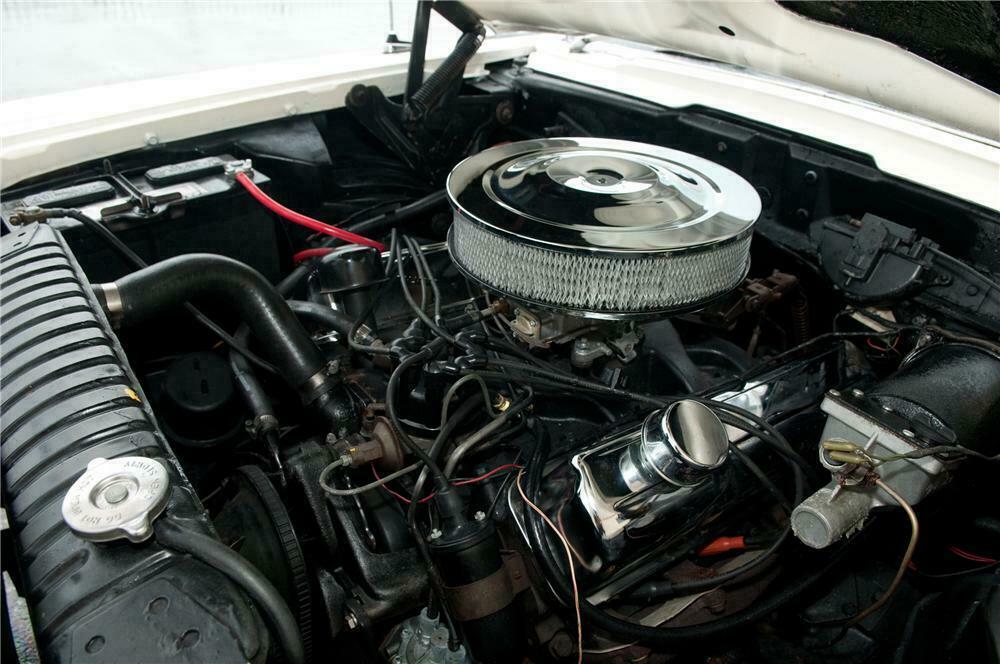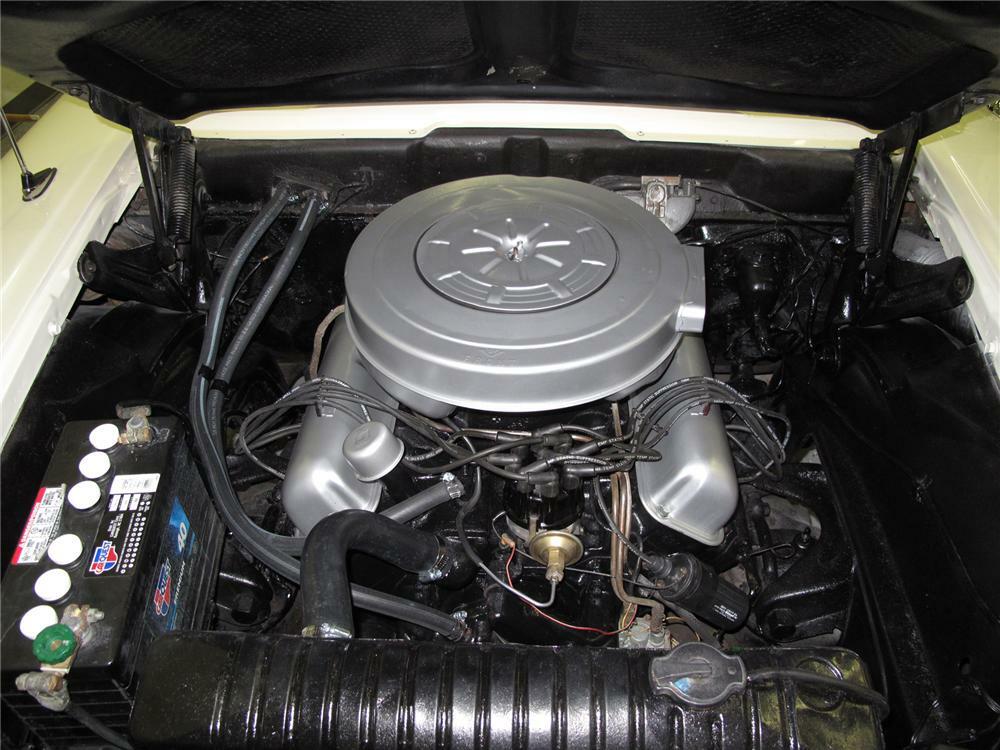Reviving a Legend: Rediscover the Excitement of the 1967 Chevrolet Nova SS Pro Touring
Today, we are thrilled to present the incredible 1967 Chevrolet Nova SS Pro Touring. This classic car has been transformed into a mesmerizing Pro Touring machine that exudes both attractiveness and aggression. From its awe-inspiring stance to the calming Marina Blue body color, every detail of this Chevrolet Nova SS is designed to captivate onlookers and provide an exhilarating driving experience.
Introduction
The 1967 Chevrolet Nova SS Pro Touring is a true masterpiece that combines classic aesthetics with modern performance. It represents the perfect blend of timeless design and advanced engineering. Whether you’re a fan of classic cars or a performance enthusiast, this vehicle is bound to impress.
Exterior Design
The first thing that catches your eye is the stunning Marina Blue body color. It beautifully accentuates the contours of the car, emphasizing its muscular and aggressive appearance. The carefully crafted lines and curves give the Chevrolet Nova SS Pro Touring a unique and captivating presence on the road. The wide and low stance further adds to its visual appeal, making it stand out from the crowd.
Custom Interior
Step inside, and you’ll be greeted by a custom interior that perfectly complements the car’s exterior. The tan leather upholstery not only adds a touch of elegance but also enhances the overall luxurious feel. Despite the modernization and customization, the interior retains the essence of the classic Nova SS. From the comfort of the bucket seats to the convenience of modern amenities such as air conditioning, electronic windows, and a state-of-the-art stereo system, this car offers the best of both worlds.
Performance
Under the hood of this 1967 Chevrolet Nova SS Pro Touring lies a meticulously clean engine bay. The powertrain and transmission have been borrowed from the renowned Corvette Z06, featuring a 5.7-liter or 346 cubic-inch small-block LS6 V8 engine. This powerhouse is mated to a T-56 6-speed manual gearbox, providing an exhilarating driving experience. With a factory rating of 405 horsepower and 400 lb.-ft of torque, this car has the muscle to impress on the road. The Ford 9-inch rear-end with Moser axles ensures power is transferred efficiently to the wheels. Additionally, the low profile BFGoodrich redline tires and Wilwood disc brakes on all four corners guarantee exceptional handling and stopping power.
Conclusion
In conclusion, the 1967 Chevrolet Nova SS Pro Touring is a remarkable vehicle that showcases the perfect blend of classic style and modern performance. From its captivating exterior design to the luxurious and customized interior, every aspect of this car has been thoughtfully crafted. Whether you’re an avid collector or a passionate driver, the Nova SS Pro Touring is sure to leave a lasting impression.
FAQs
1. What is the price of the 1967 Chevrolet Nova SS Pro Touring?
Pricing for the 1967 Chevrolet Nova SS Pro Touring can vary depending on various factors such as the condition, modifications, and overall market demand. It is best to consult with reputable classic car dealers or collectors to get an accurate estimate of the current market value.
2. How many units of this model were produced?
The exact production numbers for the 1967 Chevrolet Nova SS Pro Touring are not readily available. However, the Nova SS series gained popularity during its time, and numerous units were produced to meet the demand of car enthusiasts.
3. Can I modify the car further?
Certainly! The 1967 Chevrolet Nova SS Pro Touring provides a fantastic platform for customization and personalization. Many car enthusiasts enjoy adding their own touches to make the car truly unique. However, it is important to consult with professionals and experts in car modifications to ensure that the modifications are done safely and in compliance with applicable laws and regulations.
4. Are there any safety features in the vehicle?
The 1967 Chevrolet Nova SS Pro Touring, in its original form, might not have the same level of safety features as modern cars. However, certain upgrades and modifications can be made to enhance safety, such as adding seat belts, improving braking systems, and upgrading the suspension for better handling and stability. It is crucial to prioritize safety when driving any classic car and to seek professional advice on making appropriate safety enhancements.
5. Is the 1967 Chevrolet Nova SS Pro Touring fuel-efficient?
Given its performance-oriented nature and powerful engine, the 1967 Chevrolet Nova SS Pro Touring is not known for its fuel efficiency. The focus of this car is more on delivering exhilarating performance rather than being fuel-efficient. It is important to consider the vintage nature of the vehicle and its intended purpose when evaluating its fuel economy.
Unearth the Legendary 1971 Dodge Challenger RT 426 Hemi in the Ultimate Barn Find
Muscle car enthusiasts are no strangers to the excitement of stumbling upon hidden automotive treasures, commonly known as barn finds. However, not every barn find captures our attention quite like this one. Prepare to be amazed by the remarkable discovery of a rare 1971 Dodge Challenger RT 426 Hemi, a highly coveted and respected Mopar muscle car.
Unveiling a Time Capsule
What sets this 1971 Dodge Challenger RT 426 Hemi apart is its incredible originality, including its numbers-matching 4-speed transmission. Despite the passage of time and its prolonged hibernation, this classic beauty has managed to retain its admirable body condition. The true allure of this Mopar masterpiece lies beneath its sleek exterior.
The Heart of a Legend
Under the hood of this exceptional muscle car beats the heart of a true legend—the fabled “Elephant” Chrysler 426 cubic inch, 7.0-liter big-block Hemi V8 engine. Equipped with four-barrel carburetors, this powerplant boasts a factory rating of 425 horsepower and an impressive 425 lb.-ft. of torque. Transmitting this immense power to the rear axle is an A833 four-speed manual transmission, further enhancing the driving experience.
Rarity and Value
Classic Mopar muscle cars, expertly restored to their former glory, have been known to fetch substantial six-figure prices at auctions. It is safe to assume that this extraordinary 1971 Dodge Challenger RT 426 Hemi is no exception to this trend. While it may require some tender loving care and attention to restore it to its former splendor, the investment is undoubtedly worthwhile for avid collectors and muscle car enthusiasts alike.
Conclusion
The discovery of the ultimate barn find, the 1971 Dodge Challenger RT 426 Hemi, is truly a remarkable event in the world of classic car enthusiasts. With its stunning originality, unmatched power, and iconic design, this Mopar masterpiece represents the epitome of automotive history. The legacy of the Hemi engine continues to captivate the hearts of enthusiasts worldwide, and this rare gem is a testament to the enduring allure of American muscle cars.
FAQs
1. How rare is the 1971 Dodge Challenger RT 426 Hemi?
The 1971 Dodge Challenger RT 426 Hemi is an extremely rare vehicle, highly sought after by collectors and enthusiasts due to its limited production numbers and iconic status.
2. What is the significance of the Hemi engine?
The Hemi engine, with its unique hemispherical combustion chambers, is renowned for its exceptional power and performance. It has become synonymous with American muscle cars and remains an enduring symbol of automotive excellence.
3. What is a barn find?
A barn find refers to the discovery of a classic or vintage vehicle, often in an abandoned state, that has been hidden away for an extended period. These discoveries are highly valued due to the rarity and historical significance of the vehicles involved.
4. How valuable is a fully restored 1971 Dodge Challenger RT 426 Hemi?
A fully restored 1971 Dodge Challenger RT 426 Hemi can command a significant price at auctions, often reaching six figures. The rarity, desirability, and timeless appeal of this iconic muscle car contribute to its high value in the collector car market.
5. Where can I find more information about the 1971 Dodge Challenger RT 426 Hemi?
For more information about the 1971 Dodge Challenger RT 426 Hemi, including its history, specifications, and restoration tips, we recommend consulting reputable automotive publications, online forums, and Mopar enthusiast communities.
First Wash in Decades Unmasks a Marvelous Mystery Under the Hood of the 1961 Chevrolet Parkwood
Introduced in 1949 as a range-topping model for the Chevrolet full-size line, the Bel Air lost that privilege to the Impala in 1958. But the nameplate remained a popular choice and sold millions of units until it went into the history books in 1981. Not surprisingly, many of those Bel Airs are currently rotting away in junkyards.

Hard to find examples of the SS variety usually get saved at some point, but the more mundane cars, including the four-door sedans and wagons, are usually doomed to rust for eternity. Unless a crazy dude like the one from "Puddin's Fab Shop" steps in to save an example that no one really wants. In this case, we're talking about a 1961 station wagon.
Yes, I know, there was no Bel Air wagon until 1962, but Chevrolet did offer a similar equipment level on the 1961 Parkwood. If you're not very familiar with this nameplate, it was only produced from 1959 to 1961 and slotted between the base Brookwood grocery getter and the range-topping Nomad.

Back to the 1961 Parkwood you see here, the oldtimer was saved from a junkyard that kept it prisoner for decades. It's unclear how much time it spent off the road, but the condition of the body tells us it's been parked here for at least 30 years.

Yes, the white paint is almost entirely gone, but there are only a few rust holes on the lower body. And all the chrome trim, including the cool, V-shaped ornament that adorns the rear fascia is still there.
But you know what's really cool about this wagon? As our host discovered upon opening the hood, the previous owner hot-rodded the engine.

Don't know what that is? Well, it's a caricature of hot-rodding legend Clay Smith and the cartoon mascot of his shop, Clay Smith Cams.
Granted, this Parkwood won't run fast anytime soon, but our host seems determined to get it road-worthy again. And given the nice patina the wagon displays after getting its first wash in decades, it should make a really nice rat rod.

Until that happens, check it out in the video below. I also added a second video of a proper 1961 Parkwood survivor just to see how nice these cars were when new.
A 1964 Chevrolet Impala SS in Original Condition: A Cherished Possession
Third-generation Chevrolet Impalas aren’t necessarily rare, but on the other hand, most of the examples that are still known to be in existence come in a super-rough shape.

This kind of makes sense after so many years, but on the other hand, many of these cars end up in horrible condition due to improper storage and maintenance throughout the last decades.
This 1964 Chevrolet Impala SS is the exception that proves the rule, as it requires nothing else than minor TLC to become a perfect 10.


It’s an all-original example that hasn’t been restored just yet, so the impressive condition it’s currently flexing is just the result of correct maintenance throughout the years. The engine under the hood, a 327 (5.3-liter) V8 paired with a Powerglide transmission, is still starting and running properly.

And given everything else aligns with the top shape of the rest of the car, the Impala SS is already prepared for the road.

Absolutely everything works on this SS, so in many ways, this 1964 Chevrolet is a great way to see what a fourth-generation Impala was all about when it got to see daylight 58 years ago.
The 1970 Impala Boasts All-Original Features, Minimal Miles, and a Showroom Finish
Depending on who you ask, the final years of the fourth-generation Impala more or less turned Chevy's superstar into a dull model. The dropping sales could be seen as living proof on this front, especially as the Impala declined from over 1 million units in 1965 to nearly half of this figure by the end of the decade.

For diehard Impala fans, myself included, the late '60s brought a transformation that was absolutely needed, especially in terms of engines. Chevy tried to go for a strategy that increased Impala's customer appeal and offered more powerful powerplants, even without the SS package.
The 1970 model year witnessed the debut of two 454 (7.4-liter) monsters specifically supposed to replace the 427 (7.0-liter) unit dropped on the 1969 sibling.

The 1970 Impala that I recently came across on eBay is an impressive testament to the final year of the super-successful fourth-generation lineup.
Coming in showroom condition, this mesmerizing Impala has everything you'd ever want on a classic car. The vehicle is entirely original, unrestored, and with everything in perfect working condition, including the lights, the wipers, and even the factory radio.

And speaking of going out, the odometer indicates a little over 37,000 miles (59,500 km). The owner claims the mileage is original and correct.

The full package is rounded up by the original keys, the owner's manual, and the original bill of sale.
At some level, this 1970 Impala would perfectly fit a car museum where its stunning condition can be admired by Chevy fans. For now, it's still trying to find a new owner online, where the bidding started by seller hds-sales is underway.

Chances are someone would eventually buy the car, as the top offer at the time of writing is a little over $11,000. The battle is fierce, with over 27 bids registered in a few days online.
The 1961 Chrysler 300G in Convertible Form
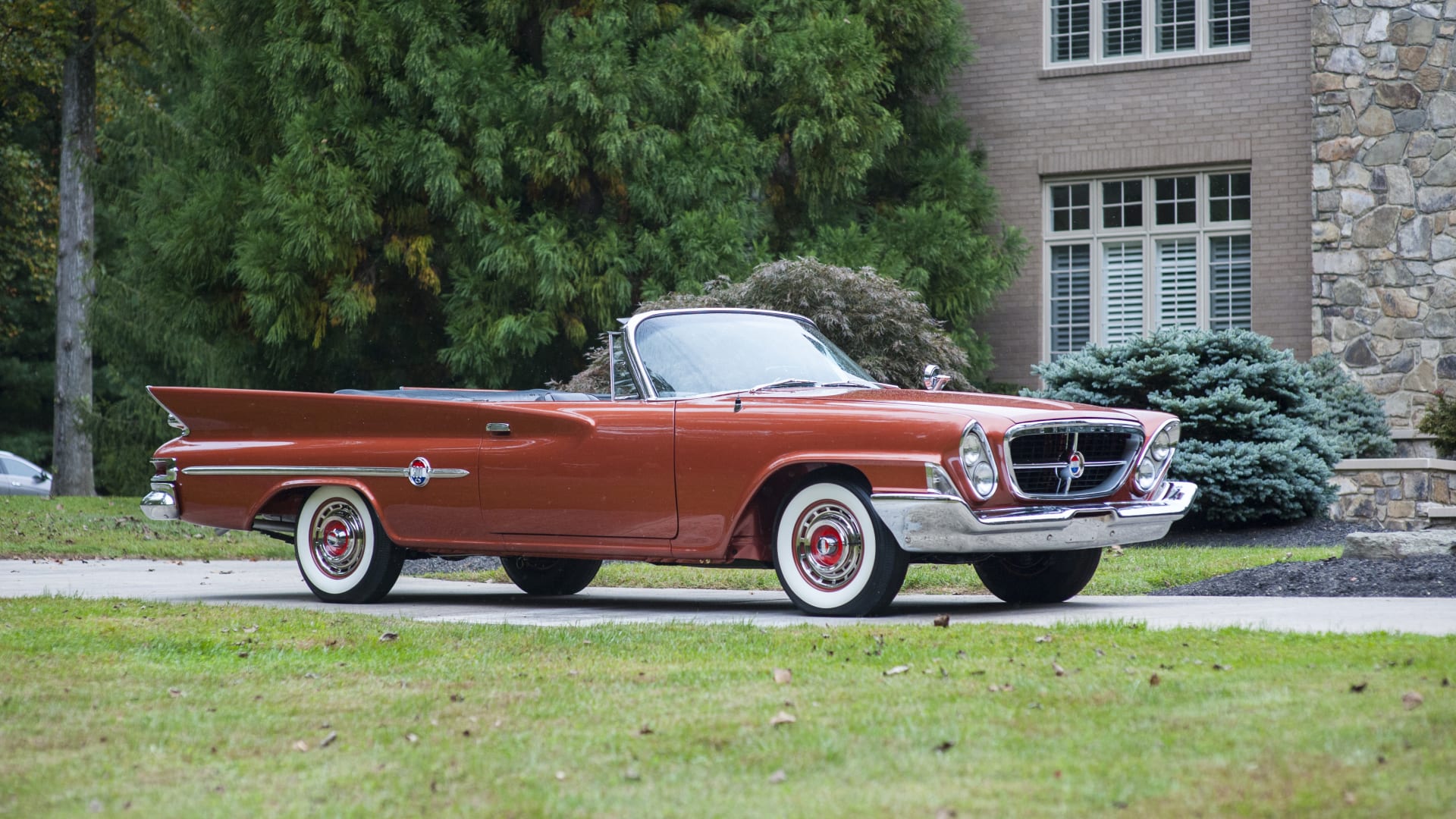
When Chrysler debuted the C-300 in 1955, it was a sensation. Based on the luxurious New Yorker coupe, the 300 was the ultimate “Banker’s Hotrod,” equipped with Chrysler’s most potent engine at the time, a 331-cu. in., Hemi V-8 with two four-barrel carburetors, hot cam, and solid lifters. Rated at 300 hp, from which it took its name, it was the most powerful American passenger car engine available at the time. In 1956, a new 300B model began the legendary “Letter Series,” which would continue for a decade.
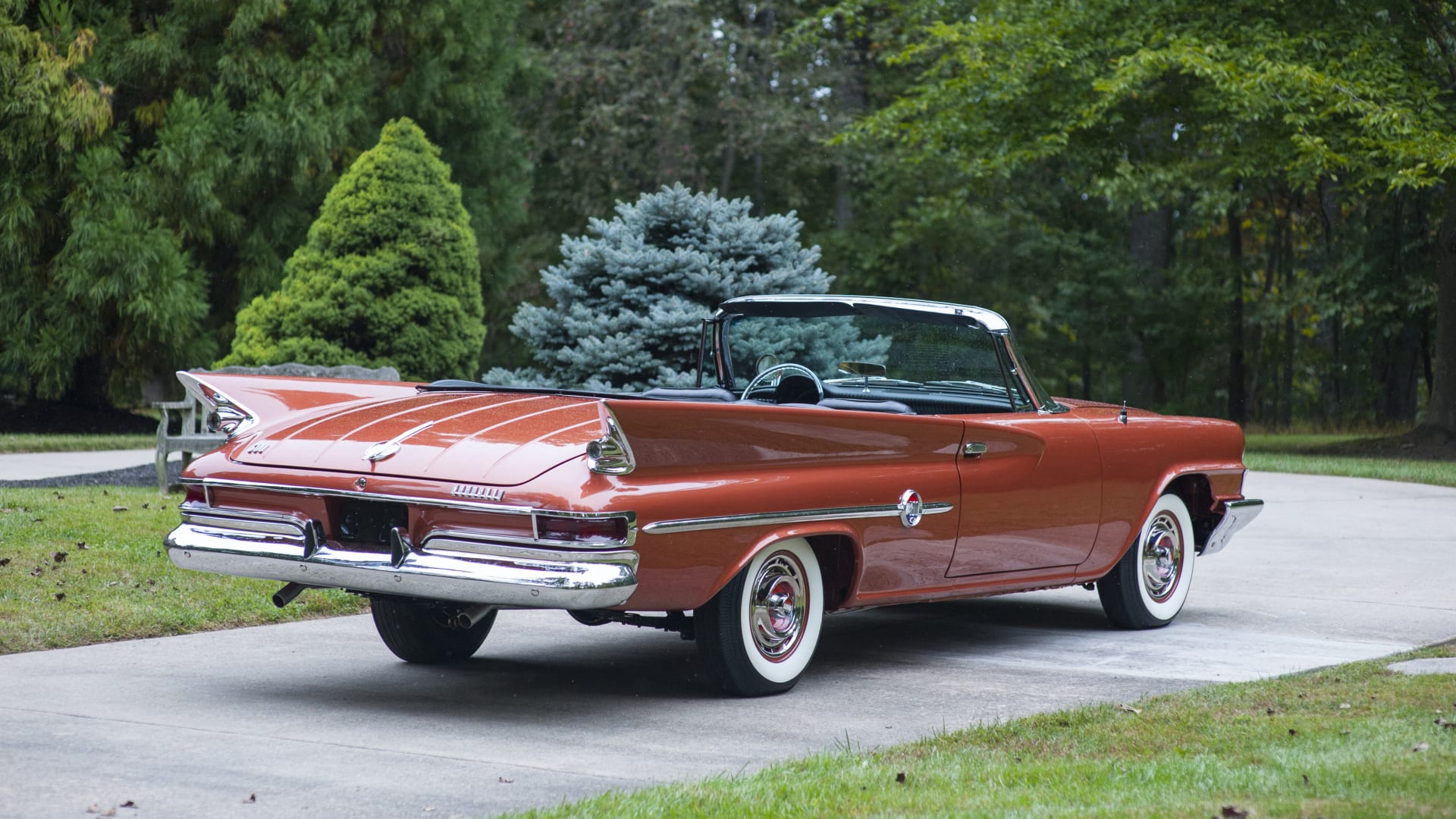
In 1957, a convertible was added to the 300C. Chrysler styling chief Vigil Exner Jr.’s fresh and innovative styling, featuring long, sweeping fins, was what the company hailed as “the most glamorous car in a generation,” creating a shape that soon had all of Detroit trying to emulate. Horsepower steadily increased along with the 300’s reputation as an extremely fast and stylish machine. An all-new 413-cu. in. engine with wedge-shaped combustion chambers and dual four-barrel carburetors powered the mighty 300E for 1959 and would be the standard 300 “Letter Series” engine for the next few years.
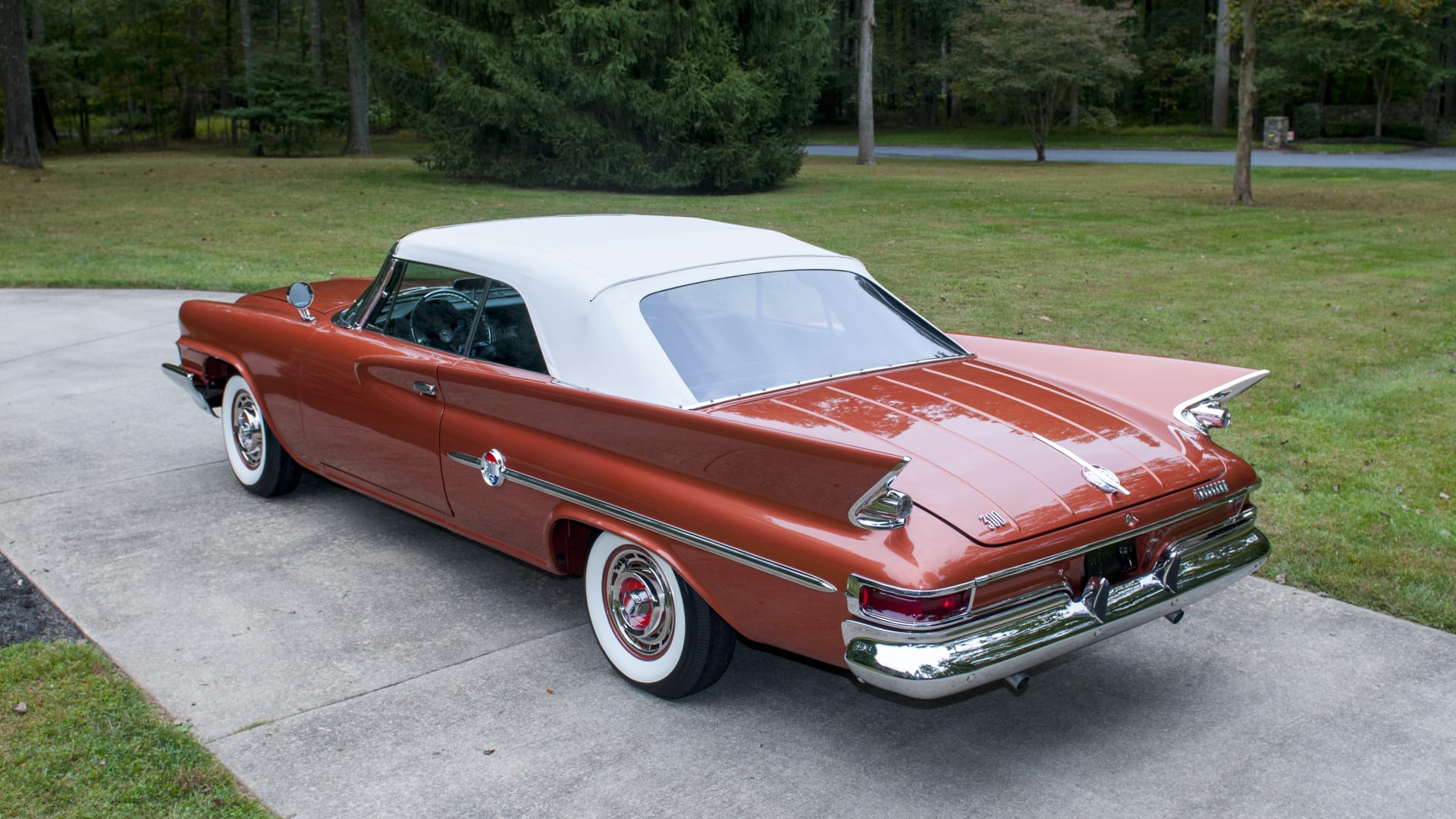
The 300G would be the last Chrysler with fins, marking an end to an era. Nineteen sixty-one would also be the last year the “Letter Series” cars would be exclusive. The 300 line was expanded in 1962 to include less expensive, non-letter series 300 cars that included a four-door, thus diluting its exclusivity.
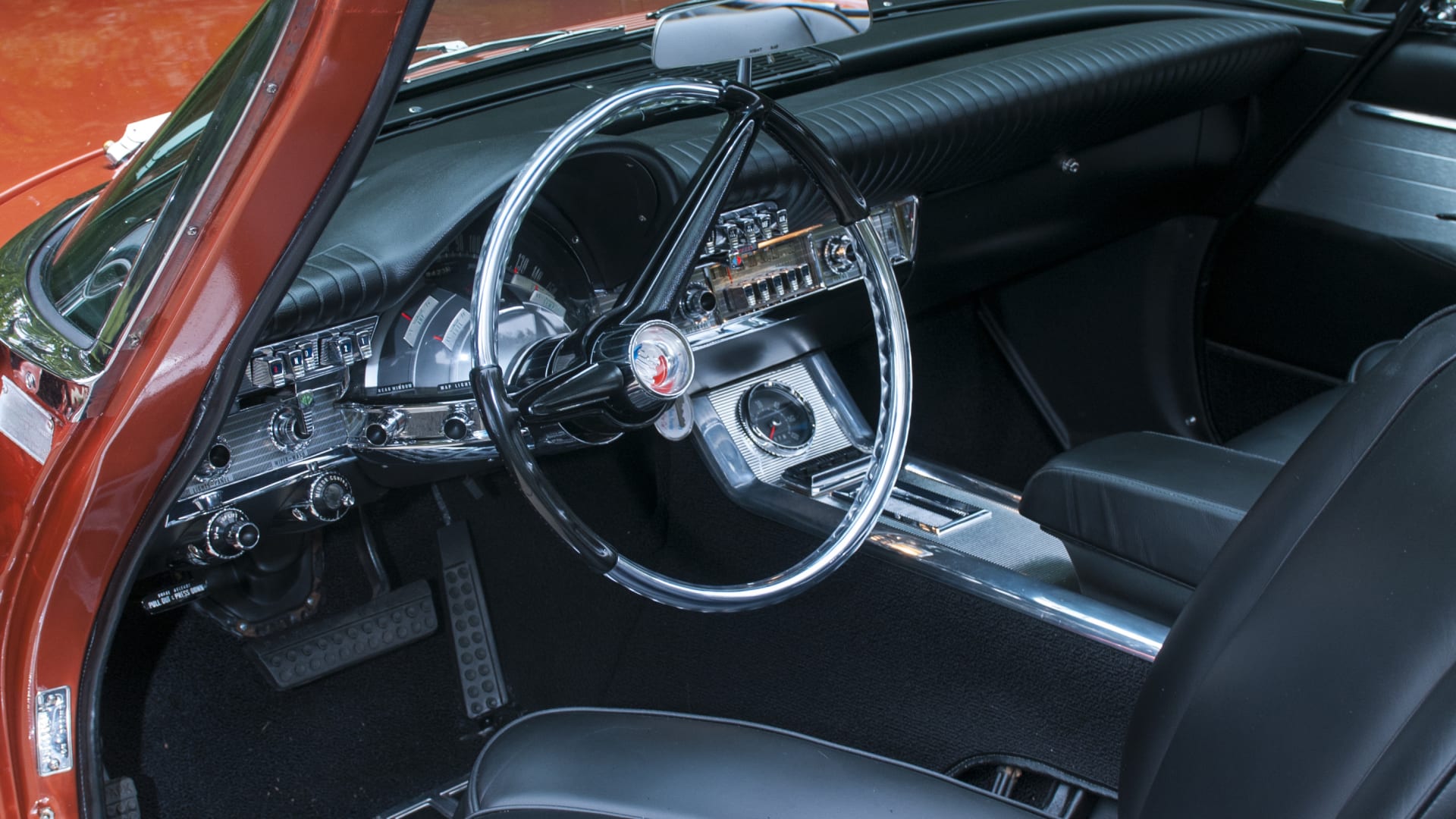
This 1961 300G, one of only 337 convertibles produced, is what many collectors and enthusiasts consider the last of the great 300 “Letter Series” cars made. Flamboyantly styled inside and out, with canted headlights and large fins on the exterior and an interior that featured leather bucket seats front and rear, plus a spectacular dashboard design highlighted by a unique Astra-dome instrument panel. It is believed to be one of only a handful of 300G convertibles that were sold new with factory air conditioning. The dramatic styling of this rare car is set off by a set of Chrysler wire wheels and wide whitewall tires, adding to the striking appeal of this sensational example of mid-century design. The original steel wheels and covers are included, as well.
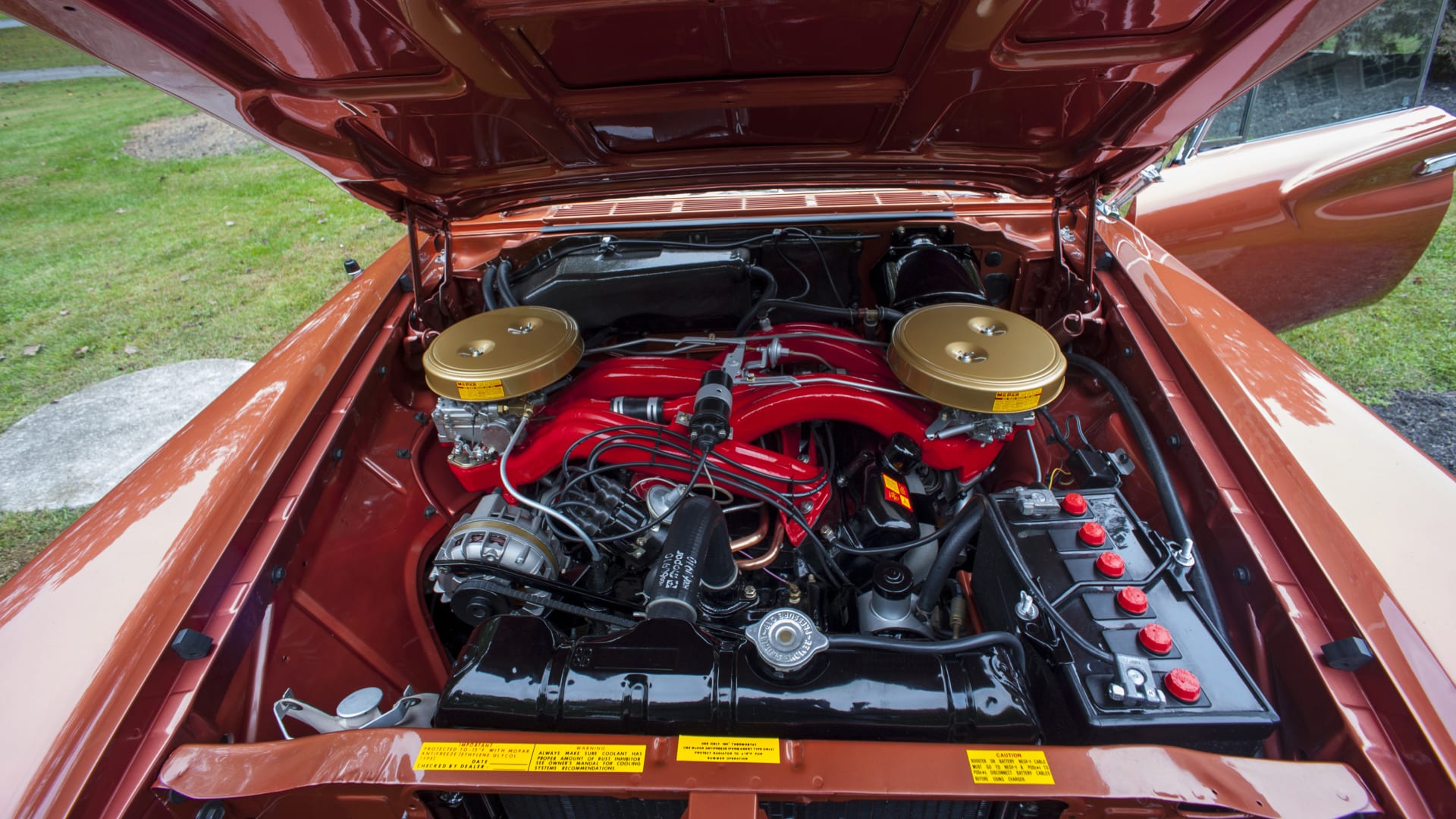
Combining a large, high-performance engine with luxurious appointments and brute power make driving this 1961 300G convertible as thrilling to drive today as it was when new.
